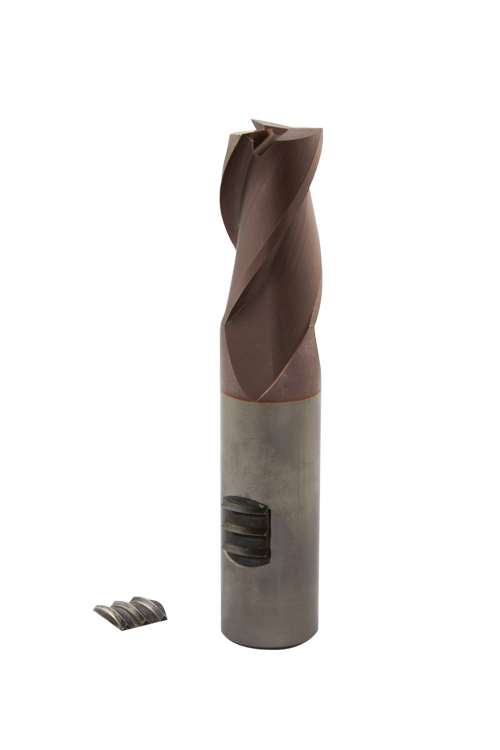Holder Design Locks Tools in Place
Tough to machine materials, aggressive metal removal rates and long, awkward tool overhangs are machining conditions that require toolholders to perform flawlessly and provide strong gripping force, high precision and vibration control.
Tough to machine materials, aggressive metal removal rates and long, awkward tool overhangs are machining conditions that require toolholders to perform flawlessly and provide strong gripping force, high precision and vibration control. In most instances, toolholder systems that function using heat or hydraulics are used, but even these systems run the risk of cutting tools pulling out of the holders. To prevent such a situation, a mechanical toolholder system has been developed that locks cutting tools in place, eliminating cutter pullout.
While mechanical toolholding systems provide incredible holding power, tooling manufacturers continue to actively develop systems that offer even more security against cutter pullout. Many of the existing systems involve special grooved patterns such as reverse helixes, or other modifications, that must be ground into a cutter’s shank. These systems can limit what brands of tools can be used. Additionally, because there is an added manufacturing process of modifying cutter shanks, these systems prove to be a bit more expensive.
Featured Content
Simple Alternative
Unlike systems that require modified tool shanks, the secuRgrip system from Rego-Fix Tool Corporation uses a special threaded insert or key that eliminates the need to alter cutters. The design is part of the company’s powRgrip mechanical toolholding system and allows the use of any off-the-shelf tool as long as it has a common standard Weldon flat on its shank.
To lock a cutter in place, the small insert of the secuRgrip system is placed in the Weldon flat of a cutter. The bottom profile of the insert matches that of the Weldon flat, and its exposed side has a thread pattern that matches with those of internally threaded powRgrip system collets. Users hold the insert in place while sliding the tool into the collet. The collet is turned so that its threads engage with those of the insert, and the tool is then screwed all the way into the collet. This cutter-collet assembly is pressed into a powRgrip system holder, and an external cap nut is tightened onto the holder for added pullout security.
Users with existing powRgrip holders can transform their systems into a secuRgrip holder by threading the outside of any powRgrip PG 25 or PG 32 holder for accepting the cap nut. Rego-Fix can either supply the necessary thread specifications or factory-threaded holders.
The secuRgrip holders accommodate cutter diameters from 0.472 inch up to 1.000 inch. And with holder body tensile strengths higher than those of the cutting tools being held, the holders will withstand cutting forces that could break the cutters before ever damaging the toolholder itself.
Escalating Demands
As machine tool spindle speeds and feed rates continue to increase, a toolholder’s vibration dampening capabilities become more critical. The better a toolholder controls or even eliminates vibration, the tighter its T.I.R. The tighter a holder’s T.I.R., the more it helps increase tool life as well as improves part accuracies and surface finishes.
The powRgrip and secuRgrip systems ensure concentricity (T.I.R.) with deviations of less than 3 microns (0.0001 inch) for tool lengths as long as 3× diameter and length pre-adjustment with a repeat accuracy of less than 10 microns (0.0004 inch). The functional contact surfaces between toolholders and collets and the collets and tool shanks allow the system to achieve high vibration dampening.
The powRgrip system absorbs vibrations by creating “material breaks.” The process starts with a cutting tool, typically made from any material from high-speed steel to carbide to cobalt, with each material having its own specific vibration frequency or harmonics. The cutting tool is held in a collet and then inserted into a powRgrip toolholder.
Rego-Fix uses different materials for each of the components of the system, each with its own unique harmonics frequencies, to create breaks or gaps. These gaps—between the cutter and collet, collet and toolholder body—provide a natural vibration-dampening capability. According to the company, leading European university testing has shown the vibration dampening capabilities of the standard powRgrip holder to far exceed those of heat shrink-type systems.
The systems are designed for fast tool exchange, requiring only about 10 seconds to remove a tool from a holder and install another one. Heat shrink holders must be heated, the cutter installed, then put in a chiller for as long as 2 or 3 minutes before the tool can be used.
Mechanical-based tooling designs such as these provide shops with solutions for their machining challenges, especially those involving tough materials such as titanium and Inconel. With such toolholding systems, shops can increase cutting tool life with cost advantages and confidently run their cutting tools at the highest speeds and feeds to increase productivity, while also improving part surface finish quality.
RELATED CONTENT
-
Understanding CNC Collet Chucks
Workholding for turning is usually fairly basic: The selection comes down to chucks or collets. This article looks at when to consider the collet chuck and what kind might be best for a given application.
-
Tools and Technologies for Deep Hole Drilling
Understanding the challenges of deep hole drilling and knowing how to select and apply the appropriate tools will help a shop profit from this operation.
-
When Thread Milling Makes Sense
Threading a workpiece is a fundamental metalworking process that every manufacturing engineer takes for granted.








